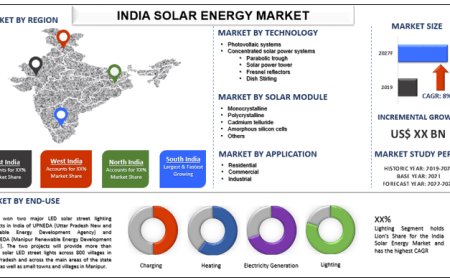Why Microservices Architecture Matters in Web & Mobile Development
Microservices architecture is a game-changer in web and mobile development. It brings unmatched scalability, resilience, and flexibility, empowering development

Introduction
In the dynamic landscape of web and mobile development, agility, scalability, and speed are non-negotiable for success. Traditional monolithic architectures, while once standard, have begun to show their limitations in an age where user expectations and business requirements evolve rapidly. Enter microservices architecture a paradigm that breaks applications into smaller, independently deployable services. This architectural shift is not merely a trend but a transformational strategy that plays a pivotal role in modern development.
This article explores why microservices architecture matters in web and mobile development, its benefits, challenges, and why businesses across the globe are embracing it to build robust, scalable, and future-proof applications.
What is Microservices Architecture?
Microservices architecture is an approach to software development where applications are composed of small, loosely coupled services, each responsible for a specific business function. These services communicate through lightweight protocols (usually HTTP/REST or messaging queues) and can be developed, deployed, and scaled independently.
Unlike monolithic systems where all components are tightly interwoven into a single application microservices allow for modular design, giving teams the flexibility to innovate faster and manage complexity more effectively.
Benefits of Microservices in Web & Mobile Development
Scalability at Its Core
Microservices enable individual components of an application to be scaled independently. For example, if a particular service like user authentication experiences higher load, it can be scaled without affecting the rest of the system. This is especially crucial in mobile apps with fluctuating user bases and web platforms experiencing variable traffic.
Faster Time-to-Market
With microservices, development teams can work on different services simultaneously using different technologies and deploy updates without coordinating a full-system release. This accelerates development cycles, allowing businesses to release features and bug fixes faster a major advantage in todays fast-paced digital economy.
Technology Agnosticism
Each microservice can be built using the most suitable technology for its task. A payment gateway can use Java, a real-time notification service can be built in Node.js, while a data analytics module might use Python. This freedom helps developers choose the best tools for the job and reduces technical debt.
Improved Fault Isolation
In monolithic applications, a single bug can crash the entire system. Microservices, by design, isolate faults if one service fails, it doesn't bring down the entire application. This leads to higher system resilience and easier debugging.
Enhanced Continuous Integration and Delivery (CI/CD)
Microservices align well with DevOps practices. They allow for automated testing, deployment, and monitoring of individual services. This makes CI/CD pipelines more efficient, reducing downtime and improving the user experience.
Optimized for Cloud and Containerization
Cloud platforms and containers (like Docker and Kubernetes) are tailor-made for microservices. They enable rapid provisioning, scaling, and orchestration, which are key requirements for high-performing mobile and web applications.
Challenges of Microservices in Web & Mobile Development
While microservices offer numerous advantages, they are not without challenges:
Complexity in Management
Orchestrating multiple services, managing their communication, and maintaining service discovery can become complex without the right tools and architecture design.
Data Consistency
In a distributed system, maintaining consistency across services is more difficult than in a monolithic system. Developers need to implement eventual consistency and deal with complex transaction management.
Increased Operational Overhead
More services mean more deployments, logs, and monitoring needs. A robust DevOps culture and the use of tools like Prometheus, Grafana, and ELK stack become essential.
Security Concerns
More endpoints and inter-service communication can increase the attack surface. Securing APIs, managing access controls, and encrypting data in transit are crucial.
Best Practices for Implementing Microservices
-
Design for Failure: Always assume that services can fail and build redundancy and retries into your systems.
-
Use API Gateways: To streamline client requests, implement API gateways that route traffic efficiently and offer security layers.
-
Adopt Service Meshes: Tools like Istio help manage microservice communication, security, and observability.
-
Automate Everything: Automate testing, deployments, scaling, and recovery processes to reduce human error and increase agility.
-
Centralized Monitoring and Logging: Ensure visibility across services using centralized logging and monitoring tools.
Future of Microservices in Web & Mobile Development
The future of microservices is intertwined with advancements in:
-
Serverless Computing: Combining microservices with serverless architectures offers ultimate scalability and cost-efficiency.
-
Edge Computing: Microservices will evolve to run closer to the user, improving speed and reducing latency in mobile applications.
-
AI-Driven DevOps: Machine learning can optimize service orchestration, detect failures early, and predict usage patterns for efficient scaling.
Conclusion
Microservices architecture is a game-changer in web and mobile development. It brings unmatched scalability, resilience, and flexibility, empowering development teams to innovate quickly and maintain high standards of user experience. Despite its challenges, the benefits it offers far outweigh the complexities especially when backed by a strong DevOps culture and the right tools.
In an era where user expectations are high and competition is fierce, adopting microservices is not just a strategic decision its a necessity. Whether you're building a startup MVP or scaling a global platform, microservices architecture lays the foundation for a robust and future-ready application.








































